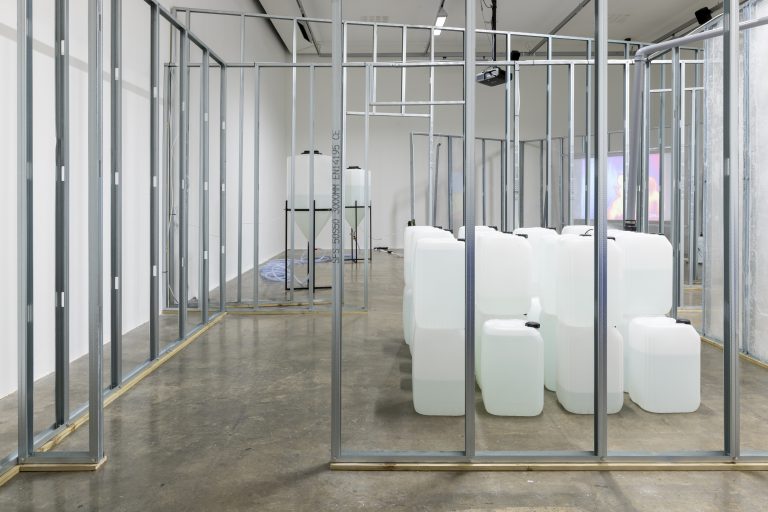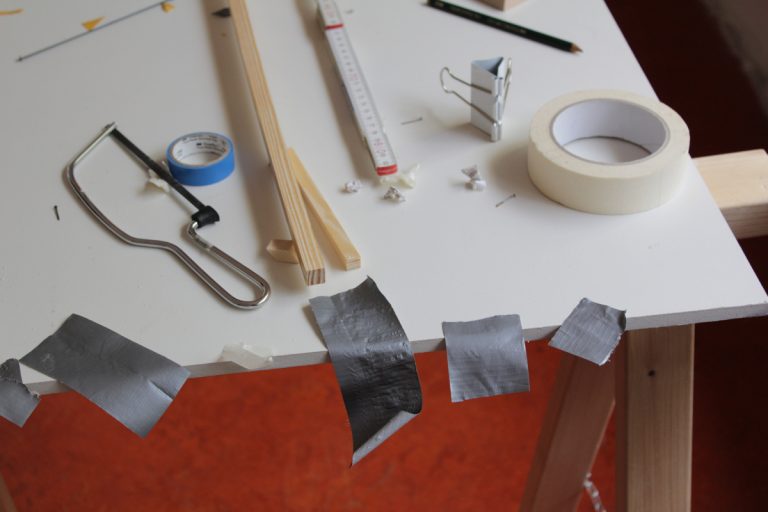At this point in time, May 2021, it seems perverse to even think about touch. Over the last year, touch starvation, suddenly a very real thing, has had profound and probably enduring effects, among them increased rates of anxiety and depression around the world. Another term for sensory deprivation is perceptual isolation, describing the deliberate reduction or removal of stimuli from one or more of the senses. Interestingly, if not surprisingly, one of the possible side effects of perceptual isolation is apophenia. This means seeing things that are not really there.
I have been living alone for a year now, almost to the day. Prior to this, I was living with three people I didn’t really like in a rackety old apartment with one bathroom, so it hardly needs stating that I’m thankful to have moved out when I did. Still, it is also true to say that if a sane-thinking person was choosing a year to live by themselves for the first time, in a foreign country, this last one might not have been their first choice. I say this while also acknowledging the complete privilege of my situation. Secure, inviolate; my name is on the buzzer and I don’t have to let anyone in.
Certainly, I can describe the last year as the safest, most controlled, and least creative of my entire life. I have had close to nothing published. All the galleries and museums have been closed, aside from briefly opening during the summer when I was spending most of my time by the lake. I visited Hamburg in July to see some museums, but mostly ended up walking around and eating ice cream. I have started writing something in a flurry countless times, only to quickly shelve it as though dreading the finality of a finished text. Anyway, I write about art and find myself in a vacuum so what is there to write about? I entertain the absurd idea that saying nothing might be an appropriate response to the past year.
Until recently, I worked a well-remunerated and profoundly unnecessary job that involved writing, but unlike art criticism did not require any actual research or even really thought. In this role, words were brute building blocks, functional: quantitative rather than qualitive. I was free to copy and paste and did so enthusiastically. On one occasion – generating a last-minute EU funding application that never even got submitted – I wrote three thousand words in a single day. My colleagues were astounded by my ability to write so quickly: ‘How do you do it?’ they would ask. I told them it’s easy to write words that have no meaning: words that will never see the light of day, that will never touch anyone at all.[1]
Like many people seemingly, I have even struggled to read. Largely confined to a fifty-five-square-metre apartment and its comfortable but unchanging sensorial coordinates, my brain actively works to generate noise. I understand this logic. Unfortunately, however, it means when I sit down to read, my brain interprets this as a signal to think about everything, all at once. Quite suddenly I find myself looking up capitals of far-flung countries and their rental prices just to quieten a particularly insistent urge, cleaning, or making detailed to-do lists to add contour to an otherwise flaccid week.
After a few months of failing to read, I gave up altogether and started to read German instead, which seems like a more productive use of my time. I like to read about the city around me, which has changed dramatically over the last year. A particular highlight is Eine Frau in Berlin, an unnamed woman’s extremely pragmatic account of the Russians’ vodka-drenched, lascivious arrival in the dying days of World War Two. A few days back, I finished reading another first-person narrative – in this case, a dystopian account from a woman who wakes to find herself trapped behind a wall.[2] In retrospect, this might not have been the most appropriate choice.
Really irrespective of its grim content, though, I read German because I have to concentrate completely, dissociating from my immediate, safe but largely unchanging surroundings. Reading in a foreign language is always more active and laboured; in my case, extremely so. The language is alien, demands detachment, and so generates a higher yield of distraction. Founded on hygiene and control, the process of reading German also rests easily within a mistrustful worldview. I move slowly and methodically, subjecting every unknown word to careful scrutiny.
Recent experience, however, suggests a poor correlation between hygiene and creativity. Of course, I do not want to overstate the messiness of the creative process. The idea of mess appalls me. But when existence becomes overdetermined by safety, a net goes up. Trouble is, the net is much too imprecise and hardly anything gets out or in. The decision to erect this thing is not really a conscious decision, either: rather, it takes form quietly but steadily over the weeks and months through a shift in our vernacular, with its now-constant flow of R-numbers, symptoms, and quarantine guidelines, queues snaking around supermarkets, people losing their minds on social media, and far too much time alone.
Bucking a general trend towards contraction, however, is the German language, which has grown even bigger over the last year, expanding to include at least twelve thousand shiny new Covid-specific words. Mostly practical compounds, some keywords include Risikogebiet (risk area), Teillockdown (partial lockdown), coronamüde (corona fatigued), Impfgegner (vaccination opponent), Mindesabstandregulung (social-distancing rule), and systemrelevant, which came to describe the typically badly paid people, like supermarket cashiers, whose importance to the continued functioning of society suddenly became very clear. Confounding a year ago, these words are now simply a part of everyday speech.
I wonder: Has language ever been known to change so much, and with such breakneck speed? Might we also describe Covid as a significant language-event?
While not new, the word Querdenker has also taken on a new currency and meaning over the last year. Literally translated as a lateral (quer-) thinker (Denker), more loosely as a maverick, the term has become shorthand for people who protest the coronavirus restrictions. Last summer, many thousands of them descended to march en masse through the streets of Berlin, a broad spectrum of anti-establishment voices, among them neo-Nazis, esotericists, followers of QAnon, as well as opponents of 5G. These Querdenkers are all around. For example, the yoga teacher who, after a pleasant class in the park, decided it was high time she told us what she knew about Bill Gates.
Their increasing ubiquity means we can even speak of a Querdenkerbewegung (lateral-thinker movement), a movement of thinkers – in fact, they often call themselves a Freiheitsbewegung (freedom movement) – united in their critical approach to the status quo. For the Querdenker, freedom resides in the brave refusal of received wisdom, of reading against the grain. My father, for instance, who spends hours on YouTube and who, apropos of nothing, tells me he is reading up about vaccines.
Writing back in the ’70s, the French philosopher Paul Ricœur famously described the modern critical attitude as one characterised by a ‘hermeneutics of suspicion’.[3] Over the years (and especially with the application of Marxian and Freudian theory), this has become standard working practice. Now, we take it for granted that there is something to unearth or reveal in a text or piece of art. This critical approach does not stop at the text, either, but governs a contemporary engagement with the world at large. Something, meaning, is always being hidden from view. This means we become suspicious in our engagement with the world. Not only this, I think, but we become competitive: if the world needs to be pressed to talk, we will be the ones making it spill the beans. Resisting proximity, we have to stay detached.
Writing about art is usually predicated on a similar state of detachment and suspicion. Criticism, or so goes the logic, is only really worthwhile as it approaches a condition of indifference, and it is only by cultivating this critical distance that the artwork’s value, if it has any, can be apprehended at all. Being touched by an artwork, let alone seeking to be touched by one, is to move into the realm of the amateur: emotions, imprecision and sentimentality, in place of reason and critique.
Still, now, the subject of art criticism often appears impervious to touch – largely hinged to an unfeeling, hermetic subject cut off from the sensory world; even better, a disembodied, roving eye, something like the monstrous eye from Vertov’s Man with a Movie Camera. Such a fiction implies the experiential non-value of art, as well as denying the social exuberance that accompanies its production. Because if detachment is the epitome of aesthetic engagement, why do we lament our light-speed transition to Zoom? What’s so wrong with the online exhibition tour?
It hardly needs stating, but what this last year has done, I think, is supplement a hermeneutics of suspicion with a phenomenology of same. So, not only is knowledge cast in mistrust, but lived experience is too. Of course, you could suggest that this far precedes the pandemic and covers everything post-9/11, say, as the movement of bodies, certain bodies, became monitored and tracked, subject to scrutiny. What this pandemic has done is further disperse suspicion – though doubtless this will be neatly relegated to the Global South with the advent of vaccine passports. Still, without immunisation, threat is everywhere. I resent unnecessary proximity in public space. Before meeting anyone indoors, I subtly try to figure out just how social they are.
Contrast this suspicion with the nearly erotic thrill in chasing a subject. Instead of caution, this is an experience characterised by a feeling of encirclement, which – and this is somewhat hard to fathom – is experienced positively. In its grip, every part of daily life seems charged with possibility. Experience takes on the dint of raw material, something to be integrated and applied. There is a feeling of permeability to this. A sense of being infected and infectable. At times, the something just arrives and it’s almost impossible to say from where. Simply put, first it wasn’t there and then suddenly it is. It assumes form like a pathogen.
The literary theorist Rita Felski, in her recent Hooked: Art and Attachment (2020), describes ‘stickiness’ as a fundamental part of human experience. This condition does not spare critical experience; rather, to be in the world is to be constantly getting caught and entangled with things, which might include artworks, books, a verse, or a particular shift from a major to minor chord. This stickiness is a dynamic and life-long process: ‘Velcro rather than superglue,’ as she puts it.[4]
The last year, by contrast, seems less about stickiness and more about enforced stuckness. Rather than opening, it has involved tightening, stasis instead of movement: both literally and metaphorically grounded. Instead of hazarding being touched, stuckness is conditional on preservation – on the blind hope that, if I just stay put, things will stay the same or even improve. Stuckness is self-protective contraction. It is also about isolation and, by implication, an unwitting maintenance of the status quo. I can clean and tidy my house as much as I want, but ultimately it remains the same. Eventually, stuckness calcifies. The faintest stirring of movement becomes a threat.
Here’s a line I never hoped to write: There is nothing like a pandemic and enforced isolation to really put the nail in the coffin of aesthetic detachment. However, as Felski rightly points out: ‘To query the doxa of detachment is not to elevate feeling over thought but to reflect on their intertwining.’[5] It does not mean detachment is no longer fit for purpose, but instead suggests thought as a question of touch, and touch as a question of thought. The two are bound in a reciprocal relation. To deny touch is to usher forth a particular kind of thought. I recall the original meaning of the handshake, which is to show the other person that you are not bearing arms. Touch is performative – a means of generating a particular way of living in the world.
Rebecca O’Dwyer is an art critic and writer based in Berlin. ‘Out of Touch’ was originally published in PVA 12.
Notes
[1] A more cynical writer might take a dig at art criticism here.
[2] Marlen Haushofer, Die Wand (Berlin: Ullstein, 2020).
[3] Paul Ricœur, Freud and Philosophy: An Essay on Interpretation, trans. D. Savage (New Haven, CT: Yale University Press, 1970).
[4] Rita Felski, Hooked: On Art and Attachment (Chicago: University of Chicago Press, 2020), 4.
[5] Felski, 11.




